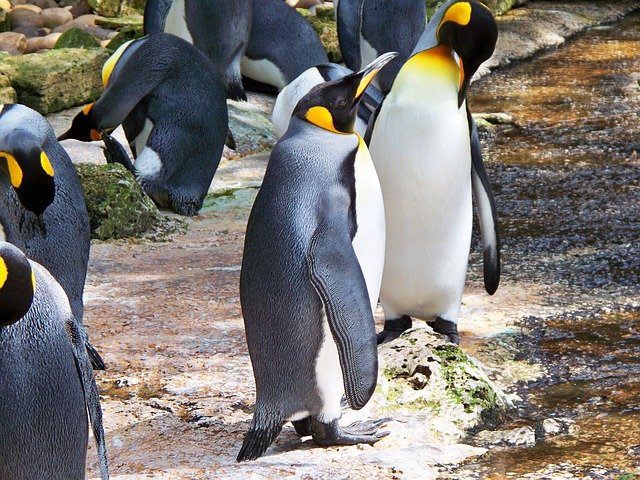
The Social Lives of Penguins: Communication and Cooperation in the Colony
Penguins are not just charming, waddling birds; they are also fascinating social creatures that exhibit complex behaviors within their colonies. Their social lives are rich and varied, showcasing impressive communication and cooperation skills that are essential for survival in their often harsh environments.
Communication: The Language of Penguins
Penguins have developed a range of vocalizations and body language to communicate with one another. Here are some key aspects of their communication:
Vocalizations
Calls and Sounds: Penguins use a variety of calls to convey different messages. For example, during the breeding season, males and females have unique calls that help them locate each other in crowded colonies. These vocalizations can vary in pitch and duration, allowing for a nuanced form of communication.
Chirps and Honks: Different species of penguins have distinct calls. Emperor penguins are known for their deep, resonant honks, while Adélie penguins produce high-pitched chirps. These sounds are crucial for mate attraction and maintaining social bonds.
Body Language
Postures and Movements: Penguins also communicate through body language. For instance, a penguin may bow or raise its flippers to signal aggression or submission. The angle of their head and the position of their flippers can indicate their mood and intentions.
Visual Displays: During courtship, penguins engage in elaborate displays, such as preening and synchronized swimming, to attract mates and strengthen pair bonds.
Cooperation: Working Together in the Colony
The social structure of a penguin colony is built on cooperation, which is vital for their survival. Here’s how they work together:
Nesting and Raising Chicks
Shared Responsibilities: In many penguin species, both parents share the responsibility of incubating eggs and feeding chicks. For example, Emperor penguins take turns keeping their single egg warm on their feet while the other forages for food.
Crèches: In species like Adélie and Gentoo penguins, chicks often form crèches—groups of young penguins that stay together while their parents are away. This social structure provides safety in numbers and allows for more efficient foraging.
Foraging and Feeding
Group Foraging: Penguins often hunt in groups, which increases their chances of finding food. By working together, they can herd fish into tighter schools, making it easier for individual penguins to catch their prey.
Information Sharing: Penguins communicate about food sources through vocalizations and body language. If one penguin discovers a rich feeding ground, it may signal others to join, enhancing the foraging success of the entire colony.
Conclusion
The social lives of penguins are a testament to the complexity of their behaviors and interactions. Through effective communication and cooperation, these remarkable birds thrive in some of the most challenging environments on Earth. Their social structures not only ensure survival but also foster strong bonds, making penguins a captivating subject for researchers and nature enthusiasts alike.
Further Reading
- Penguin Communication: Vocalizations and Behavior
- The Importance of Social Structures in Animal Behavior
- Conservation Efforts for Penguin Colonies
Understanding the social dynamics of penguins can provide valuable insights into their ecology and the importance of preserving their habitats for future generations.

Upvoted! Thank you for supporting witness @jswit.
Downvoting a post can decrease pending rewards and make it less visible. Common reasons:
Submit
Downvoting a post can decrease pending rewards and make it less visible. Common reasons:
Submit